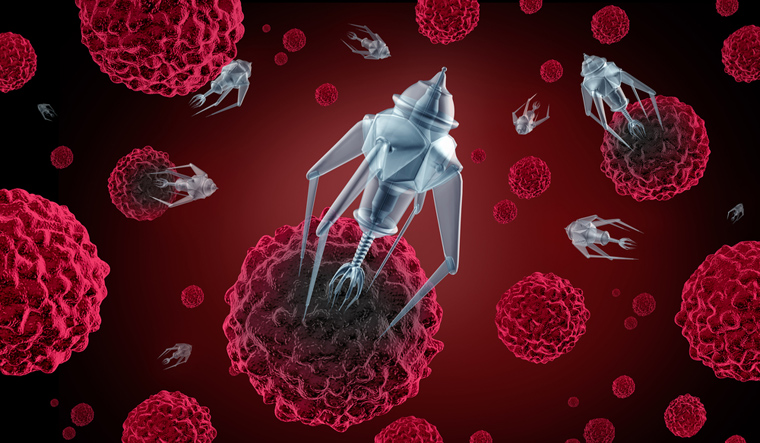Scientists have developed nanometre-sized robots that can actively move through dense tissue like the vitreous of the eye, paving the way for minimally-invasive tools for precisely delivering medicines.
So far, the transport of nano-vehicles has only been demonstrated in model systems or biological fluids, but not in real tissue.
Researchers at the Max Planck Institute for Intelligent Systems in Germany applied a non-stick coating to the nanopropellers, which are only 500 nm wide—exactly small enough to fit through the tight molecular matrix of the gel-like substance in the vitreous.
The drills are 200 times smaller than the diameter of a human hair, even smaller than a bacterium's width, according to a study published in the journal Science Advances.
Their shape and their slippery coating enable the nanopropellers to move relatively unhindered through an eye, without damaging the sensitive biological tissue around them.
This is the first time scientists were able to steer nanorobots through dense tissue, as so far, it has only been demonstrated in model systems or biological fluids.
The researchers' vision is to one day load the nanopropellers with drugs or other therapeutic agents and steer them to a targeted area, where they can deliver the medication to where it is needed.
Targeted drug delivery inside dense biological tissue is very challenging, especially at these small scales.
It is the viscous consistency of the inside of the eyeball, the tight molecular matrix which a nanopropeller has to squeeze through. It acts as a barrier and prevents the penetration of larger structures.
Even if the size-requirements are fulfilled, the chemical properties of the biopolymeric network in the eye would still result in the nanopropeller getting stuck in this mesh of molecules.
Researchers designed each nanopropeller to not exceed 500 nanmetres in size, and applied a two layered non-stick coating. The first layer consists of molecules bound to the surface, while the second is a coating with liquid fluorocarbon.
This dramatically decreases the adhesive force between the nanorobots and the surrounding tissue.
With a small needle, the researchers injected tens of thousands of their bacteria-sized helical robots into the vitreous humour of a pig's eye. With the help of a surrounding magnetic field that rotates the nanopropellers, they then swim towards the retina, where the swarm lands.
Slippery nanorobots penetrate an eye. Being able to precisely control the swarm in real-time was what the researchers were aiming for.
The team is already working on one day using their nano-vehicles for targeted delivery applications.


